PacificEthnoExp. Part IV. SamoaMapAugust 25–27, 2013 Humanity had always observed the stars and counted time. As science flourished, the most advanced countries began to establish prime meridians to make it easier to understand where everyone is and what the actual time is. Russia had the Pulkovo meridian, France had the Paris meridian, Britain had the Greenwich meridian, and so on. There’s a particularly touching story about how, in the mid-19th century, Russian scientists traveled to London with clocks so that they could set the time on them to Greenwich time and find out the precise difference between Greenwich and Pulkovo time once they returned. They couldn’t just call and ask back then. Anyone who tries to study pre-revolutionary Russian maps will find themselves totally disoriented: all the numbers on the margins are different from what we’re used to. An international conference at the end of the 19th century ultimately decided to get rid of all the local prime meridians and leave Greenwich as the main one. Many years passed. Today we use Coordinated Universal Time, which came to replace Greenwich Mean Time (although, for the sake of simplicity, time is still specified as GMT rather than the more accurate UTC). And the prime meridian is still the one that passes through Greenwich. Consequently, there’s also its antithesis—the International Date Line. It passes through the exact opposite side of the globe at 180 degrees longitude, through the middle of the Pacific Ocean. Throughout the entire 20th century, the International Date Line was a more or less straight line all the way down through the ocean. But then things got complicated (see Kiribati). A hundred years ago, Western Samoa switched to American time, essentially stepping over to the right side of the International Date Line. And since you gain an extra day when you do that, the kingdom celebrated the 4th of July twice in a row (to make its American friends extra-happy). In 2011, Samoa decided to return to its roots and switch to the same time as New Zealand and Australia, its main trading partners. So it threw out December 30th. December 29, 2011 was immediately followed by December 31. Now the International Date Line passes between the two Samoas, putting regular Samoa a day ahead of American Samoa, even though there’s only a hundred kilometers separating the two. The land mass on the horizon is 24 hours ahead of us: 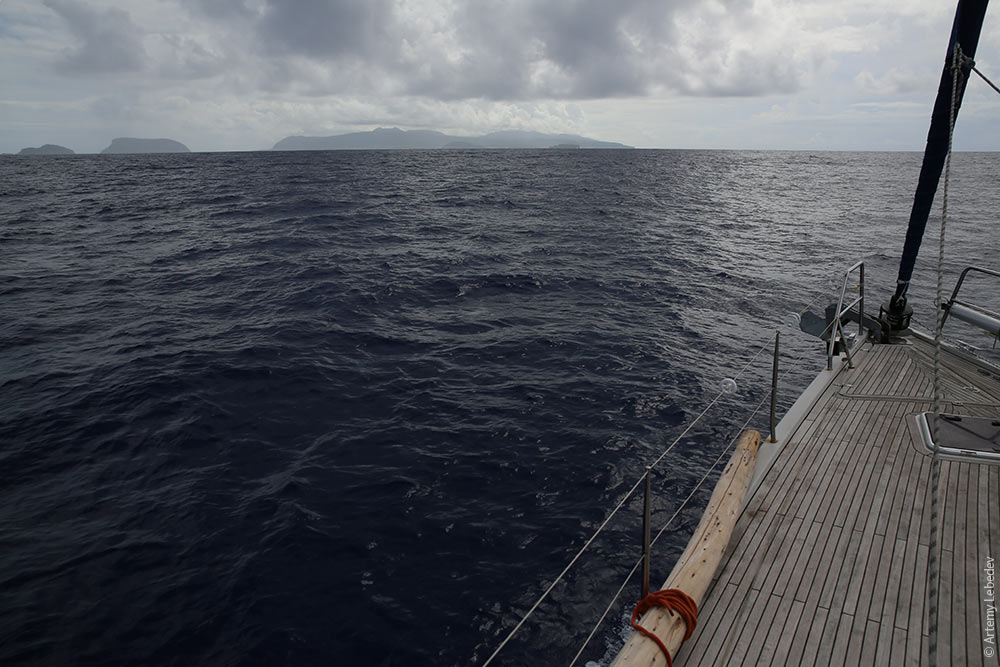 * * * It’s Sunday night when we arrive, and there won’t be any customs or border agents on duty until Monday morning. It could be worse, though—a boat next to us arrived Friday night, and the people on it still can’t set foot on shore because they haven’t had their passports stamped. Meanwhile, I’ve already arranged everything in advance as usual—I booked hotel rooms for the five of us before we even set sail. I really don’t want to just lose those rooms, so we need to figure out a way to change the booking to tomorrow night. The French guy on the boat next to ours, who’s barbecuing right on his boat, informs us that going into the city would be viewed as disrespect for the country’s laws, and if we need anything, like a pack of cigarettes, we can ask him to go get it for us. And he continues to blow on his coals. 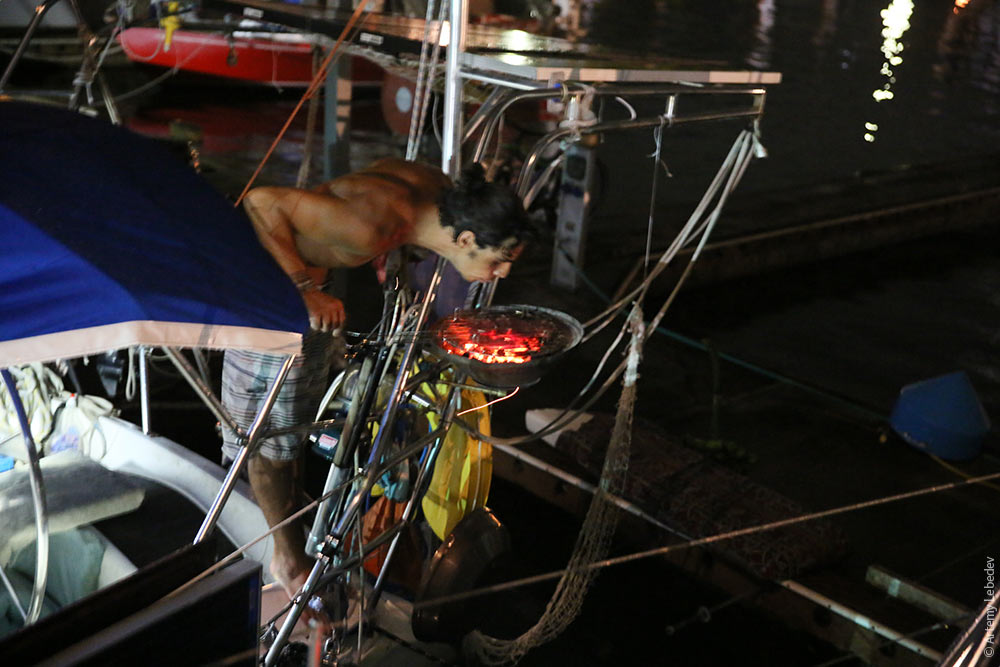
Angry and dirty, we resign ourselves to spending the night on the boat. I step out onto the dock. There’s a security guard sitting there. And that’s how I managed to go out into the city without any documents. I put some money on the guy’s cell phone account, bought some groceries for dinner, and walked back in the pouring rain. I called the hotel and played dumb, pretending that I was in American Samoa and hadn’t realized that the dates were off by one day. I already paid for tonight by mistake because I’m an idiot, I told them, but could they please move our booking to tomorrow night? The hotel obliged. At 8 a.m., we began calling for the border and customs officials over the radio. The quarantine lady showed up first, at around 10 a.m. She stamped our papers and gave us permission to lower the yellow flag. An hour or so later, the customs agents showed up. Then some other customs agents showed up. Young, dumb guys, drunk on power and their own alpha-maleness. They grilled us mercilessly, went through all our stuff, looked through all the photos on our cell phones and cameras, turned the whole place upside down, then brought in dogs and made them walk all over the table and beds while they themselves stomped around in their boots (which translates to blatant disrespect on a yacht). It was lunchtime by the time we finally made it out into the city. Samoa turned out to be a fairly busy place, with hotels, restaurants, and tourist entertainment. American Samoa has none of these things—just a cliff with a road around the perimeter of the island. The life of the city revolves around the bus station. Unlike the buses of its American neighbor, which consist of converted passenger cars, Samoa’s consist of converted Toyota pickups. 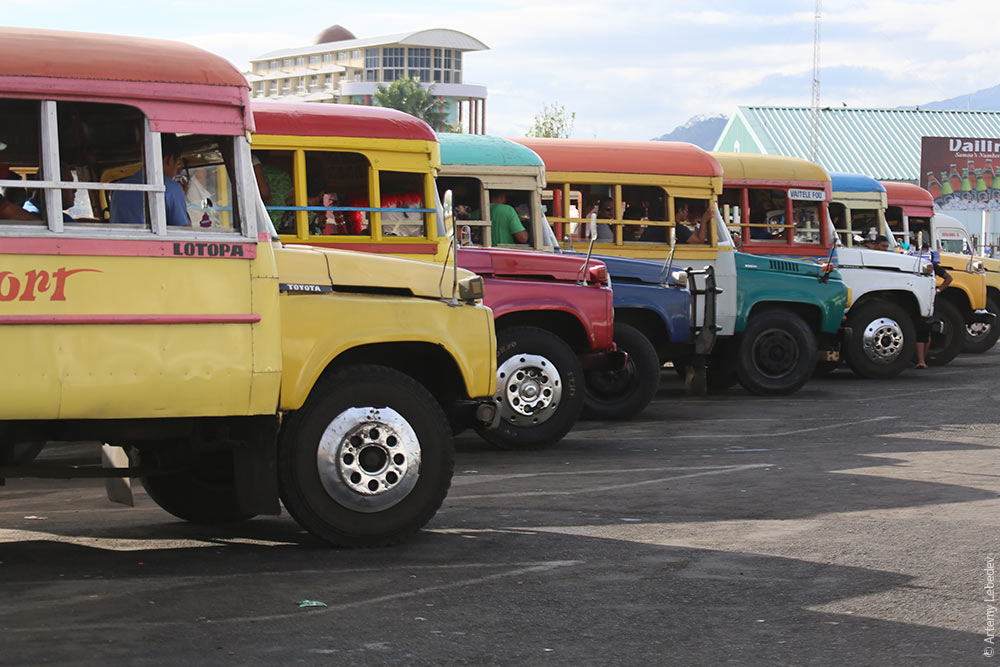 Only six people on the island possess the skill of bus-making and are keeping the tradition alive. Each bus circulates between the station and one of the inland villages.  The buses are always packed like a tin of sardines. 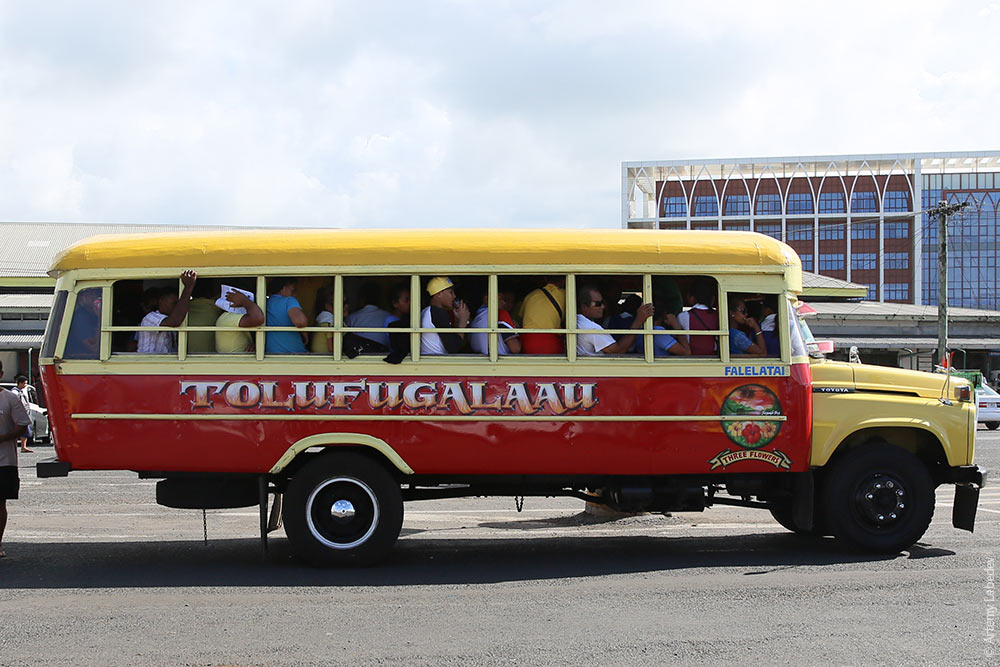 Yet smoking is allowed on board. 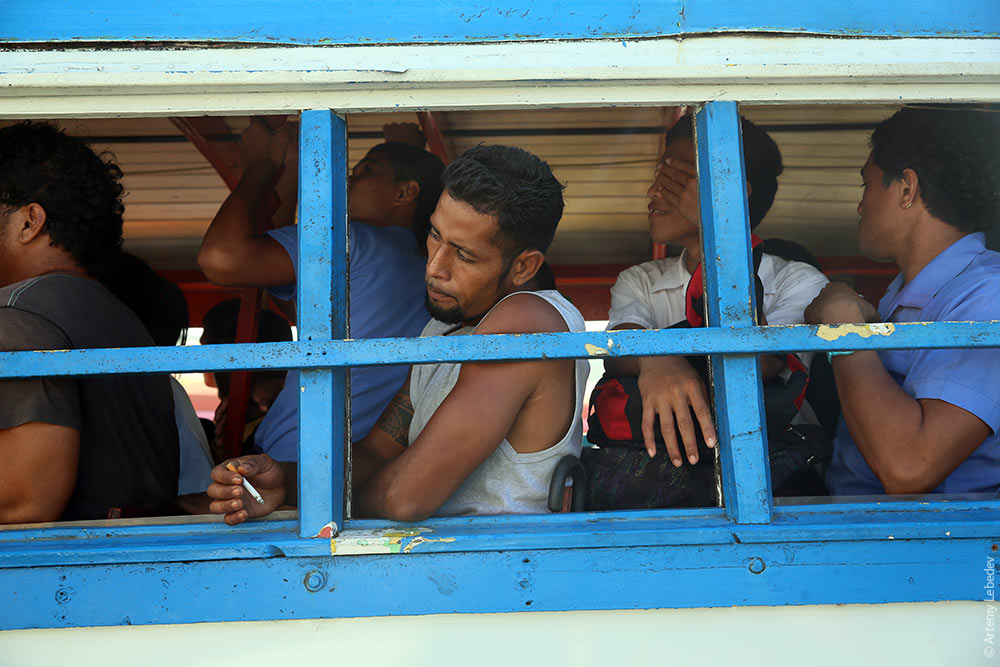 A distortion in the zebra pattern indicates a speed hump. It’s elegant and clear. 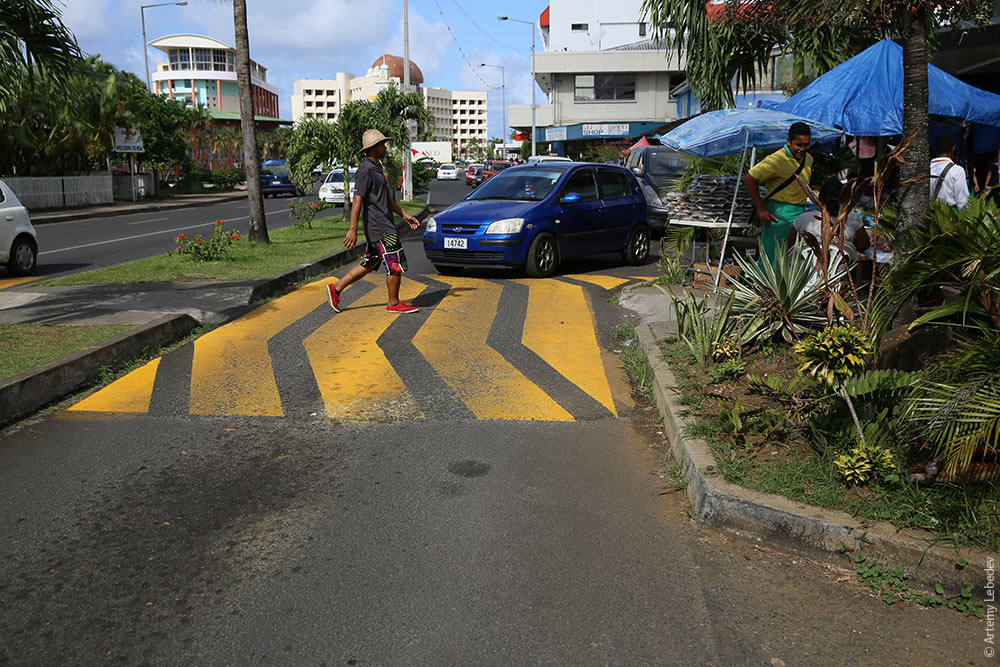 A crosswalk button. 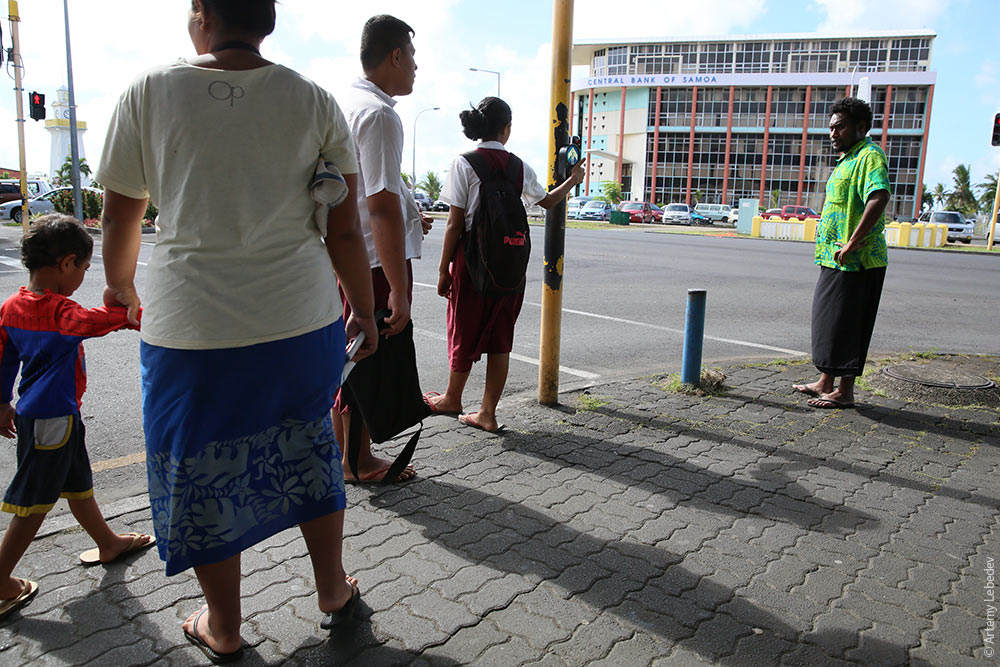 A pedestrian traffic light.  A vehicle traffic light. 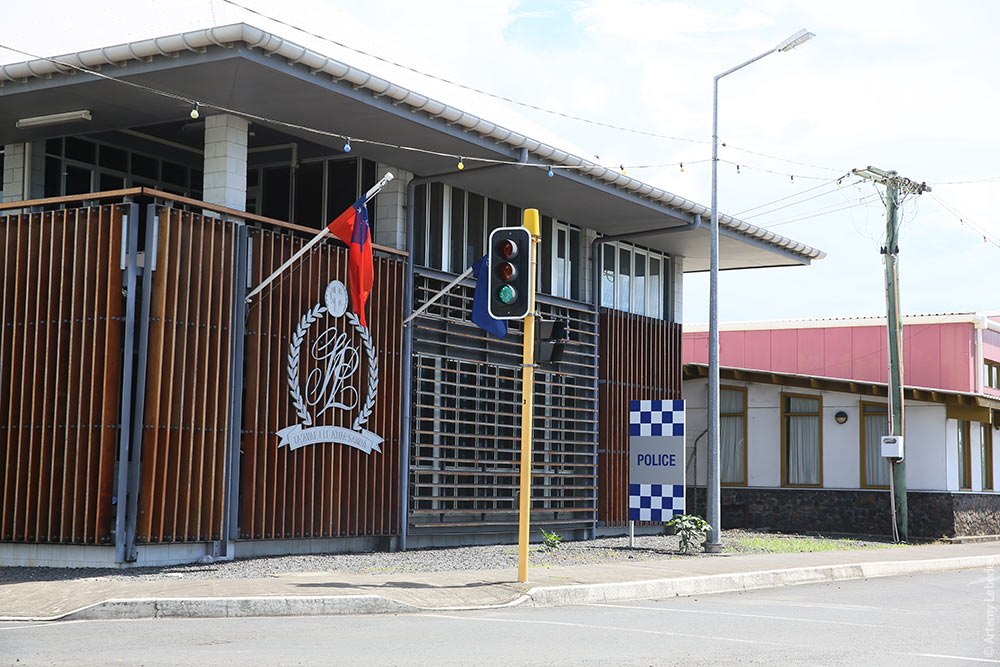 Pedestrian crosswalk ahead (the sign is exactly like the ones in New Zealand). 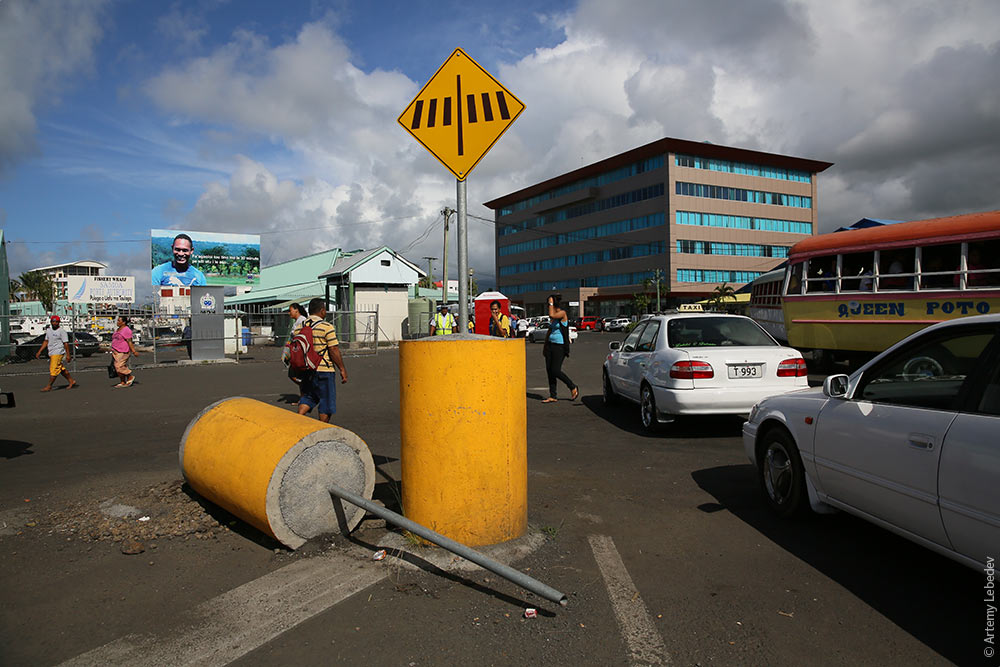 A license plate. 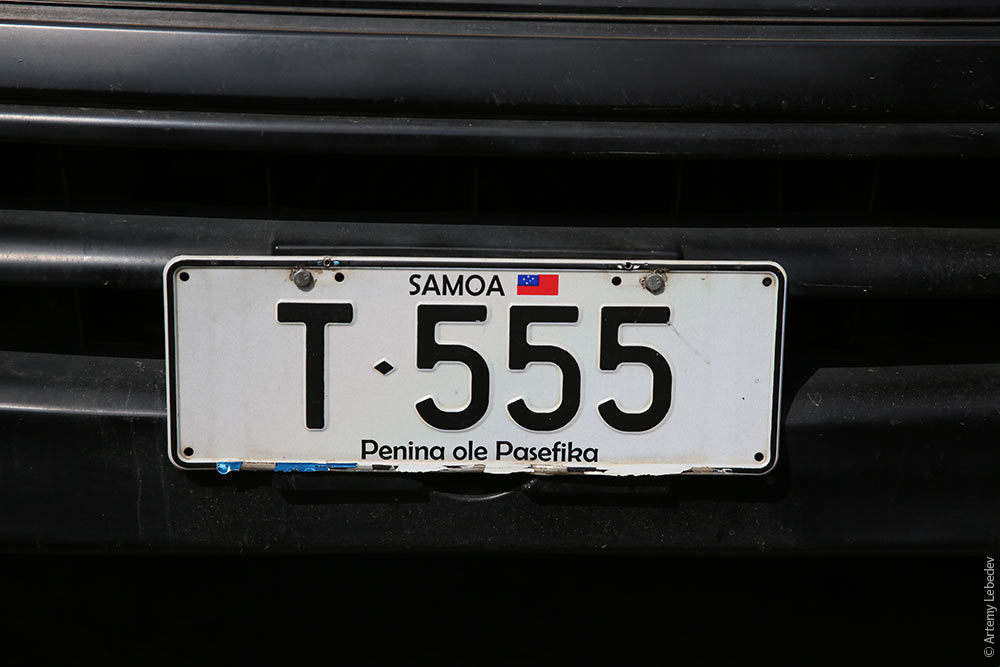 Every car’s windshield has a sticker with the number of the month in which its warrant of fitness expires. Because the months recur more frequently than years, the stickers are issued in a different color for each year. 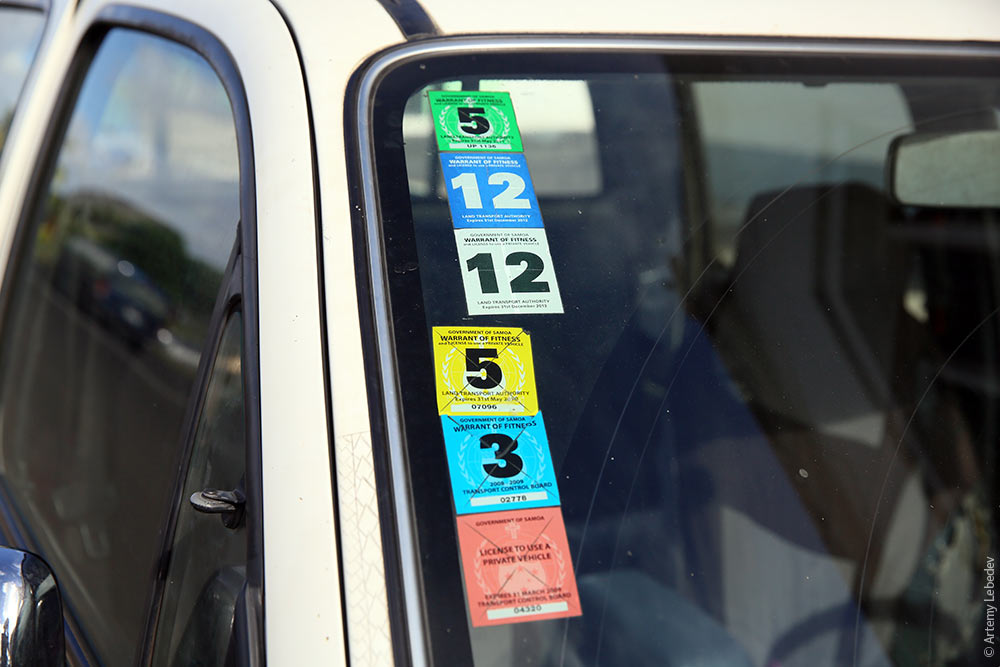 Many drivers decorate the top of their dashboard with a strip of fur.  A city trash can. 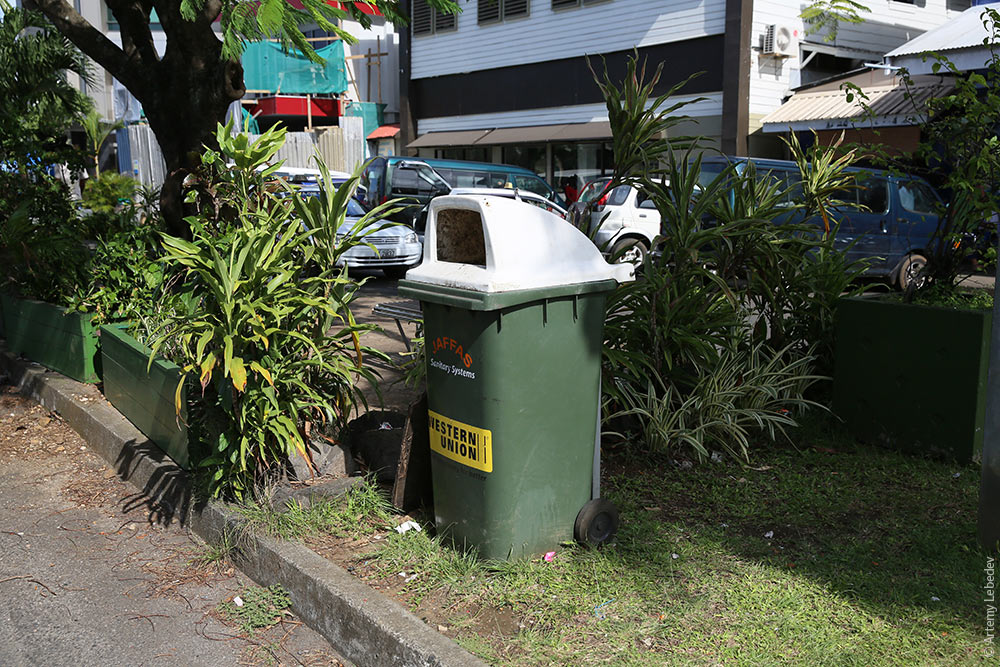 There are raised baskets on poles for household trash (like in Chile, Brazil, Paraguay, or Argentina) to keep dogs from ripping the trash bags apart. 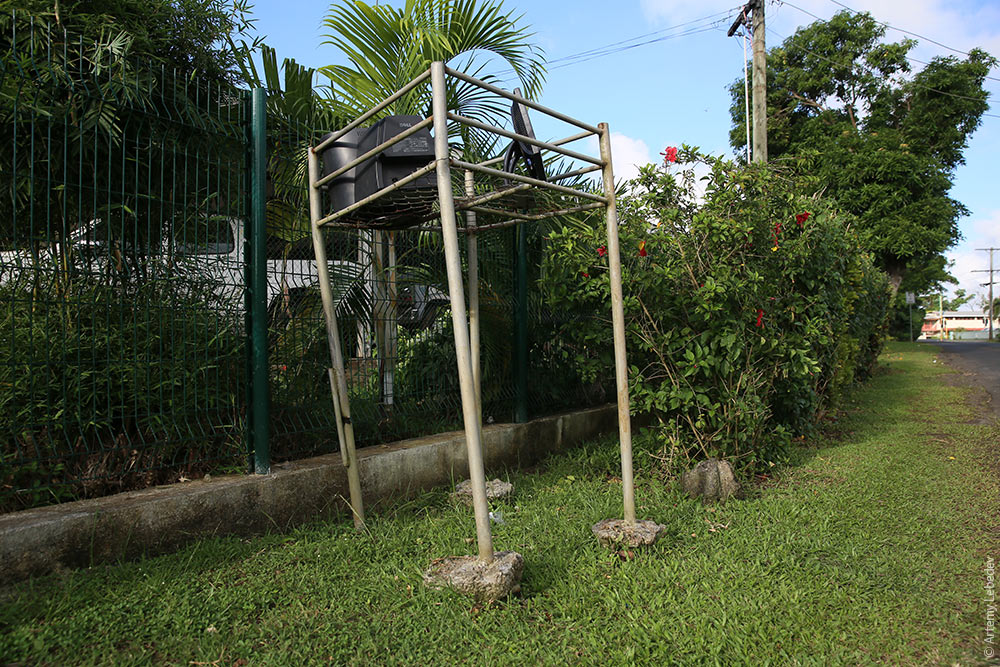 Incidentally, almost every port accepts garbage from boats for the price of a few dollars a bag. You can’t just sneak in with your garbage and toss it into a dumpster. However, international regulations allow for organic waste, glass, metal, and wood to be dumped overboard into the ocean when a boat is at least 12 miles away from shore. In other words, no one has to haul apple cores around with them for months—everything goes to the fishes. 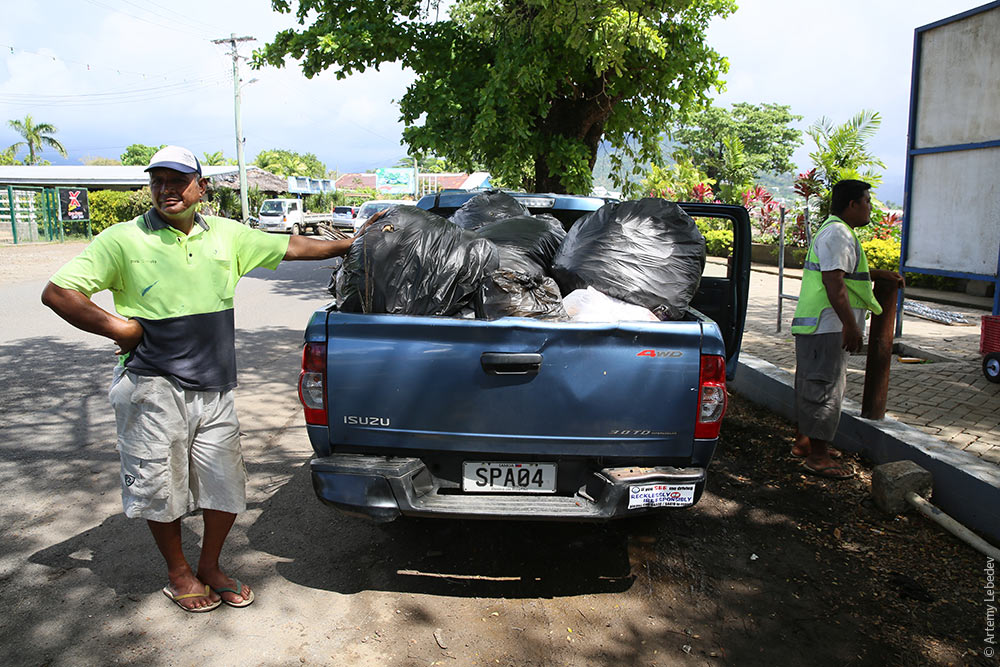 A metal guardrail with wooden posts. 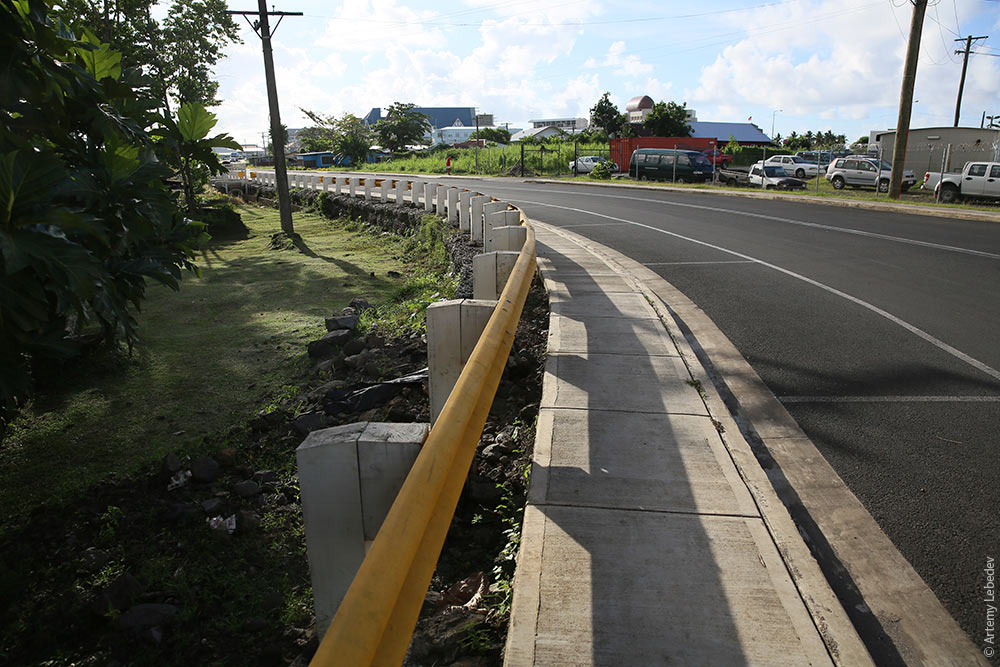 Samoa’s main distinctive detail is the yellow and blue posts that mark the location of fire hydrants and some other kind of fire equipment. 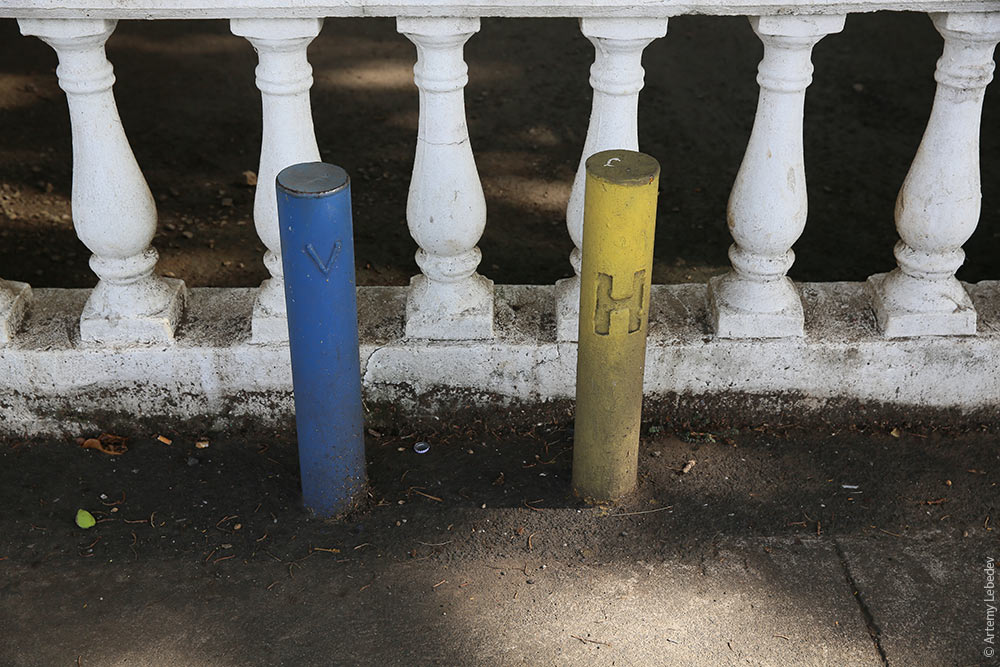 A post box, located next to a post office. 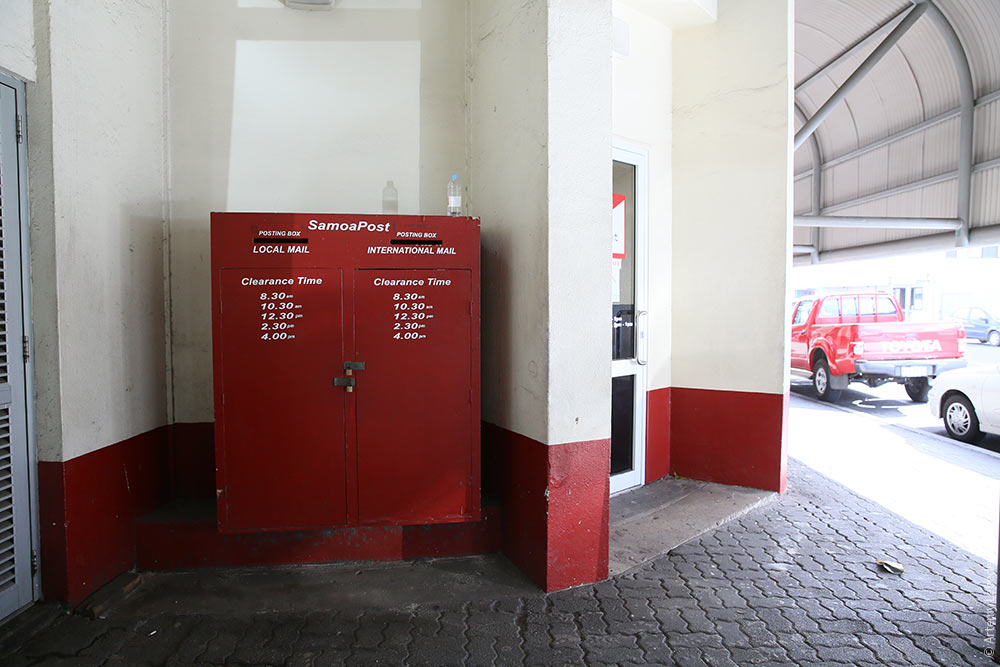 The city. 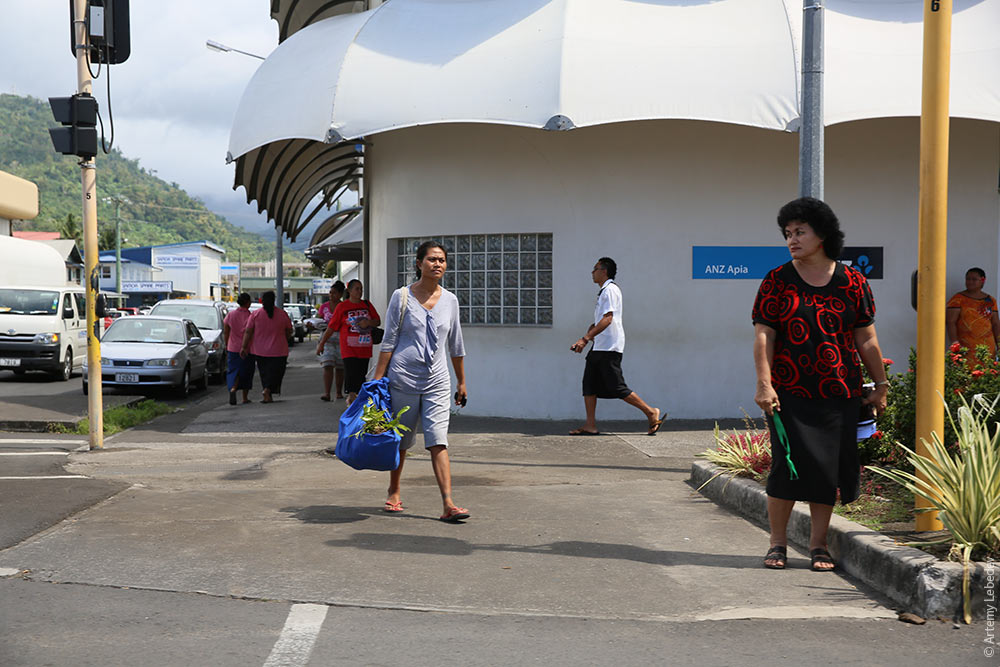 Downtown. 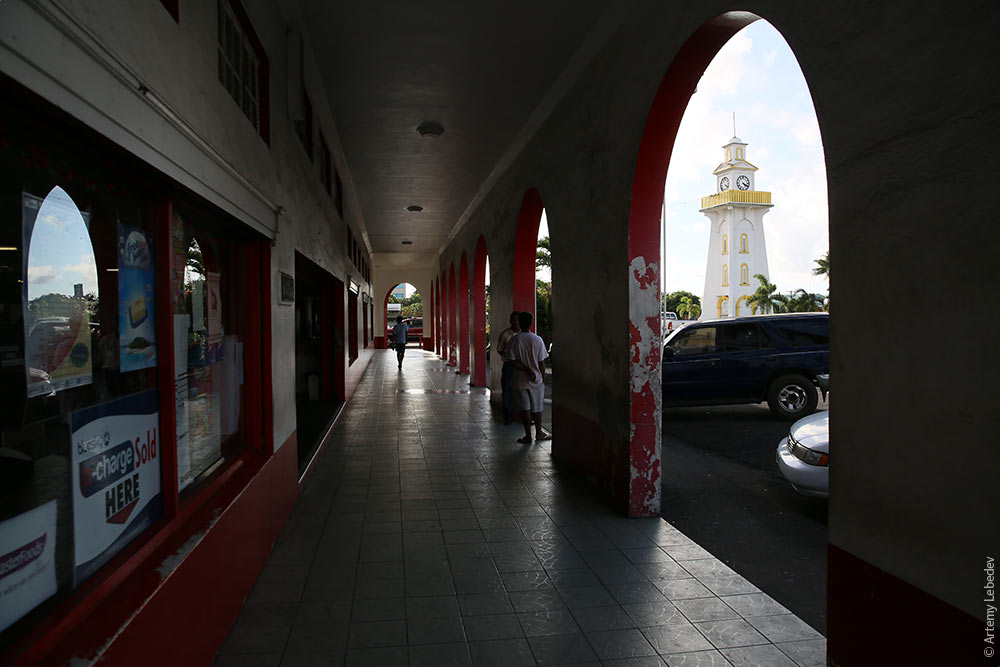 Grannies. 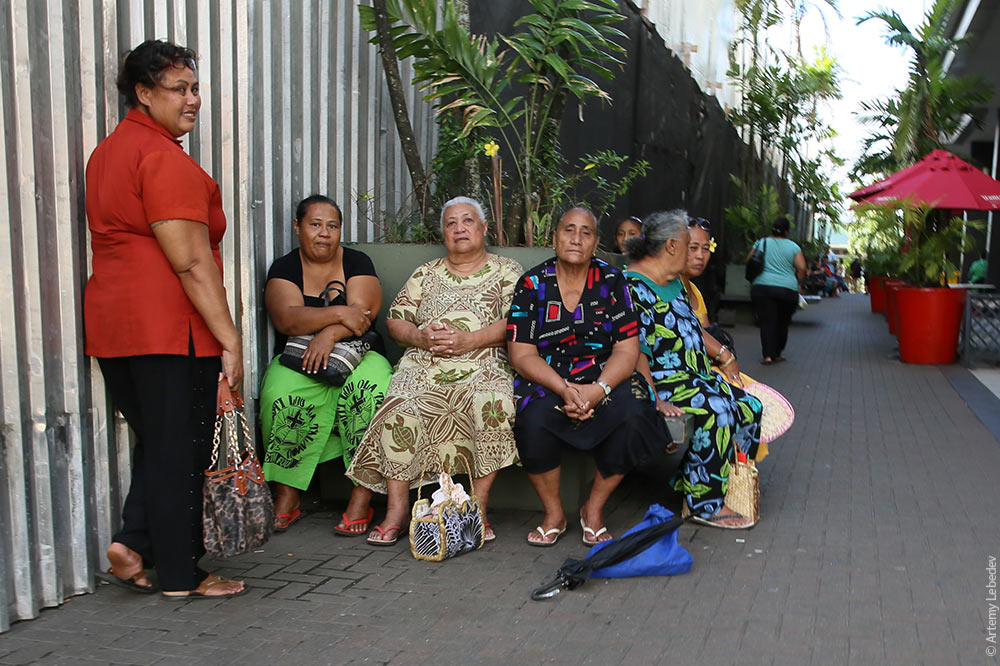 I always ask taxi drivers for their phone number. Here’s a local driver writing his down on a piece of paper. The fingernails on his thumbs are really gross. 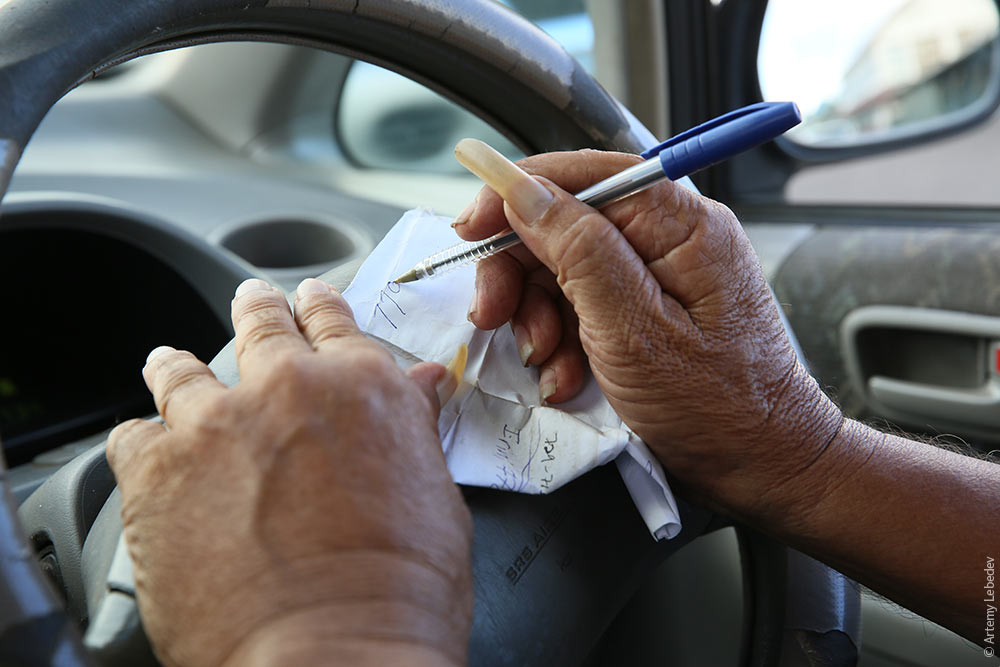 We stock up on fuel and groceries. The wall of the local supermarket is covered with advice for dealing with hangovers. 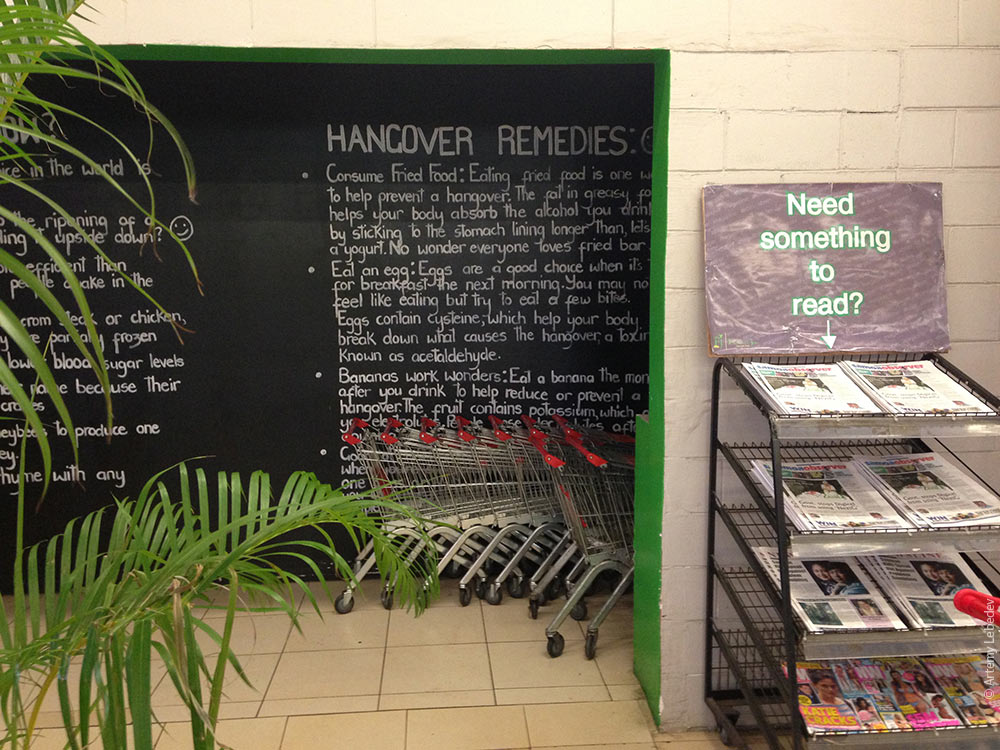 * * * After lunch, we set out to sea. I have the night shift at the wheel. 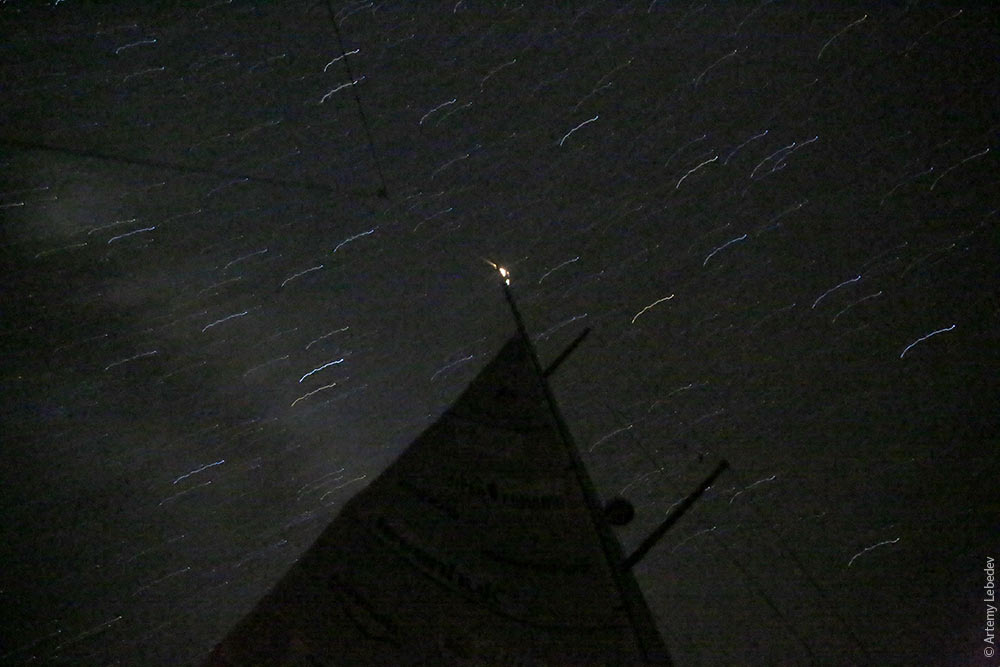 |